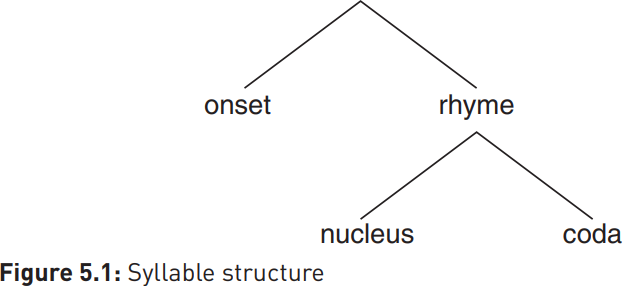
Syllable structure
 المؤلف:
David Hornsby
المؤلف:
David Hornsby
 المصدر:
Linguistics A complete introduction
المصدر:
Linguistics A complete introduction
 الجزء والصفحة:
100-5
الجزء والصفحة:
100-5
 2023-12-16
2023-12-16
 1715
1715
Syllable structure
We have already seen evidence that syllable structure has important phonological consequences. This was notably the case for the liquid approximants /I/ and /r/ in English: allophonic variation for /l/ depends on position in the syllable, while /r/ is often deleted syllable-finally, but never syllable-initially. Cross-linguistic evidence suggests that syllables (conventionally represented by a lower case Greek sigma σ) have a hierarchical structure consisting of an onset and a rhyme:

Of these elements, only the nucleus is obligatory, and it must be filled either by a vowel or by a sound sufficiently sonorous to occupy the nuclear or head position. This would include, for example, the liquid /I/ in some English unstressed syllables (e.g. in the second syllable in bottle) or indeed /r/ or /I/ in some Czech stressed ones (e.g. prst ‘finger’; vlk ‘wolf’). The nucleus together with the coda form the rhyme: a phonological definition of the verb ‘to rhyme’ as conventionally used might therefore be ‘to have an identical nucleus and coda’, e.g. bend/ trend, ash/smash, cold/bold, etc.
On either side of the nucleus, onset and coda position are occupied by less sonorous items on the sonority hierarchy than the nucleus, so vowels are not permitted but approximants and other consonants can occur in these positions. I, oh and a are examples of English monosyllabic words which consist entirely of a nucleus; he, you and three are examples of syllables with onset and nucleus, but no coda; and finally ill, elf, asked all have nucleus and coda within the rhyme, but no onset.
 الاكثر قراءة في Phonology
الاكثر قراءة في Phonology
 اخر الاخبار
اخر الاخبار
اخبار العتبة العباسية المقدسة


